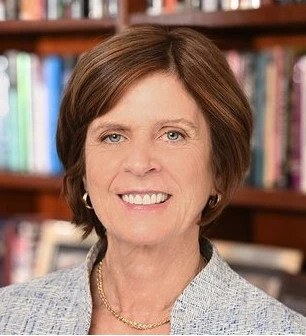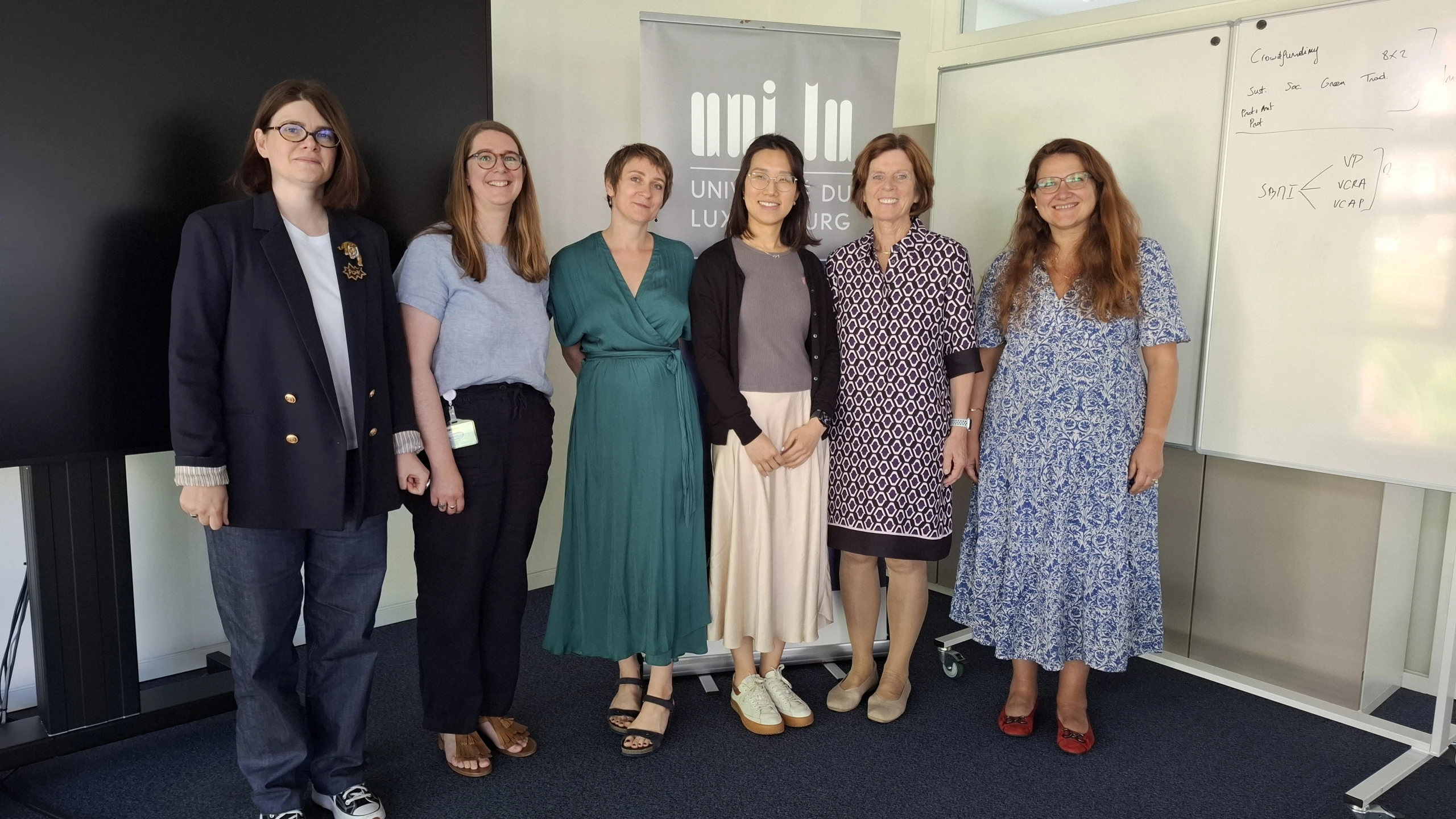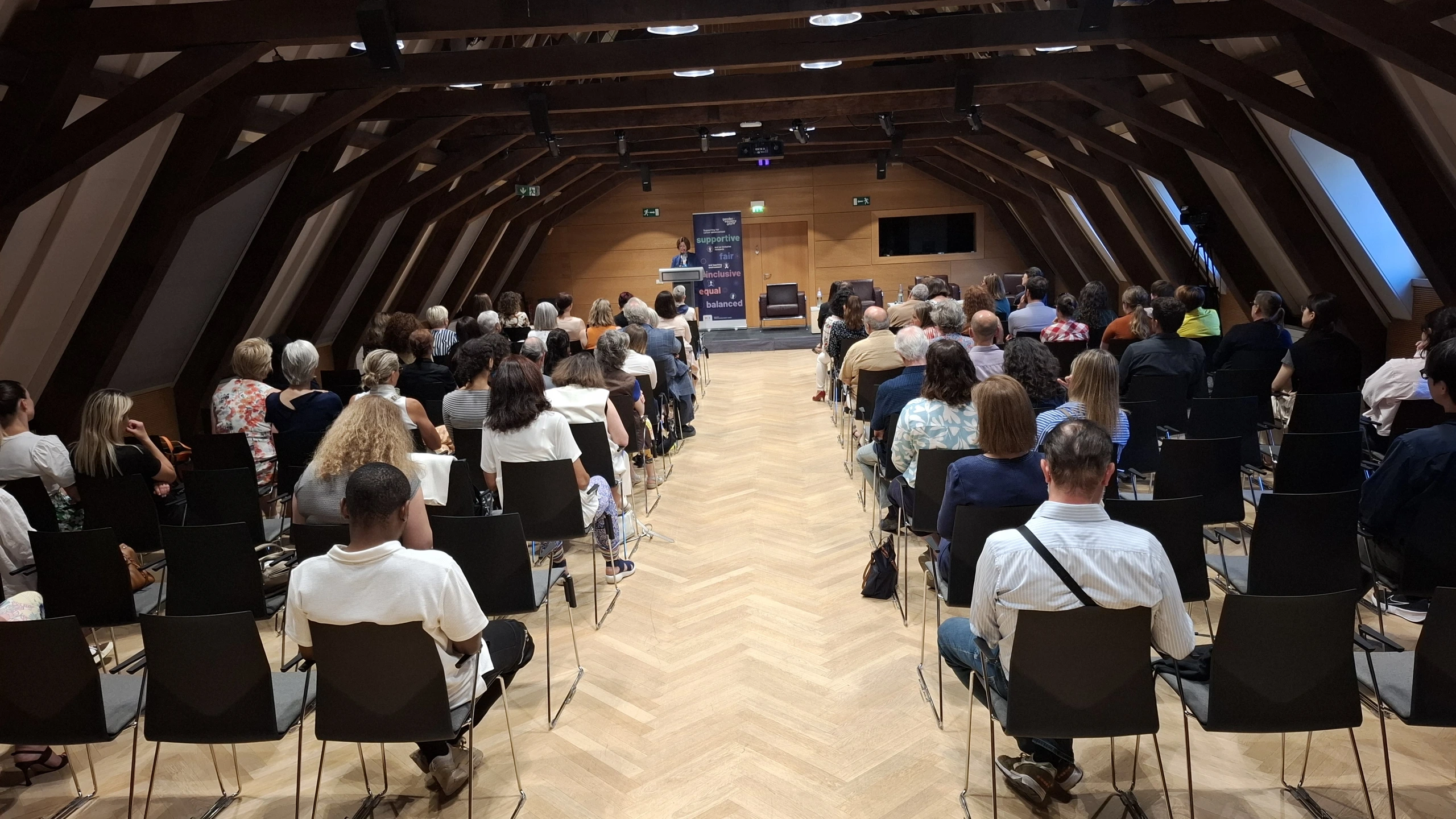As part of the University of Luxembourg’s Women Leaders series, the Gender Equality Office welcomed Louise Richardson for a keynote event titled “The Eurydice Moment: Women’s Leadership in a Critical Time.”

Louise Richardson is widely recognised as a most accomplished figure in international academia. A native of Ireland, she studied at Trinity College Dublin, earned a Master’s degree from UCLA, and completed her PhD at Harvard University. She began her academic career at Harvard, and later served as Vice Chancellor of the University of St Andrews and of the University of Oxford. Since 2022, she has been President of the Carnegie Corporation of New York.
In the following interview, she shares her reflections on academic leadership, gender equality in higher education, and the evolving role of universities in a rapidly changing world.
Throughout your career, you’ve broken many barriers. What structural and cultural changes are most needed to help more women reach top leadership positions in academia?
I would highlight two areas. First, we need to address what is often called the “motherhood penalty.” We should view having children as a public good, not just a private choice. That means offering generous maternity leave, accessible childcare aligned with working hours, and reliable support for after-school care.
Second, we must change workplace culture. Women often find academic environments unwelcoming. For example, salary negotiations tend to reward those who push aggressively for higher pay – a pattern that typically favors men. Institutions should proactively ensure fair compensation from the start.
We also need to better recognise the leadership that women are already showing. I had three children while building my academic career. The skills required to manage that balance are considerable, yet they’re rarely acknowledged.
Finally, we need to rethink what leadership actually means. It’s not about being all-powerful; it’s about bringing out the best in others. That concept of leadership should evolve.
Statistically, women apply less often for leadership roles because they feel they might not meet all the criteria. What’s your take on this?
It’s a significant issue. Research shows that women tend to take on more of the administrative and service work in universities—tasks that men often manage to avoid. This shouldn’t be seen as a weakness in women but rather as a structural imbalance that institutions must address.
Department heads and academic leaders should not wait for women to put themselves forward, they need to actively encourage talented women to apply. The more women we see in leadership, the more others will feel empowered to step up. We need to normalise female leadership.
And women still face pressure and hostility—especially online. What role should universities play in ensuring safe digital spaces?
There’s no doubt in my mind that women are more frequently targeted by digital attacks. Alarmingly, research suggests that young men’s attitudes toward women and female leaders are becoming more regressive. I don’t fully know why. It may be linked to excessive time spent online, isolation from inclusive real-world environments, or economic insecurity fueling nostalgia for traditional gender roles.
Universities must lead by example. They should call out harmful behavior, both publicly and privately, and make it clear that it’s unacceptable. Women, particularly those in the public eye, are acutely aware of this hostility, yet the issue isn’t discussed openly enough. Promoting respectful and safe digital spaces should be part of every educational institution’s mission.
Digital transformation is a strategic priority at the University of Luxembourg. Do you see it as enabling or hindering gender equality?
It works both ways. On one hand, digital platforms can offer women, especially those in marginalised contexts, access to resources and inspiration. On the other, they also provide an anonymous space for aggressive misogyny to flourish. I remember seeing a group of fully veiled women gathered around a computer at a university in Alexandria. The internet offered them a window into a different world – one where women lived and worked differently. That kind of access can be profoundly empowering.
When a woman in leadership fails, she’s often seen as failing as a woman. When a man fails, he’s simply a leader who didn’t succeed. That double standard creates an additional burden.
In your leadership roles, how did you support women in advancing to senior positions?
I appointed many highly qualified women. When I arrived at St Andrews, there were no women on the senior management team. By the time I left, the team was 50% female. Every appointment was based on merit. Supporting and promoting capable women demonstrates what female leadership looks like in practice.
In most of my roles, I was the first woman to hold the position. I always felt a deep responsibility—not only to succeed for my own sake or the institution’s, but to ensure I wouldn’t be the last.
‟ When a woman in leadership fails, she’s often seen as failing as a woman. When a man fails, he’s simply a leader who didn’t succeed. That double standard creates an additional burden.”
To wrap up, what advice would you give to a young female researcher at the start of her career?
Follow your heart and take the leap. Say yes to opportunities, but also take a long-term view. Your career will span decades. You can have it all, but not all at once. You’ll need to make trade-offs. Early in my career, I spent more on childcare than I earned as an assistant professor, which felt absurd at times. But in hindsight, I’m very glad I stayed on the path. My advice: be persistent, think long-term, do what you care about, and seize every opportunity.



